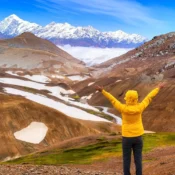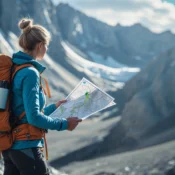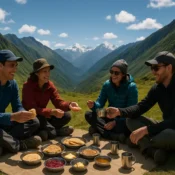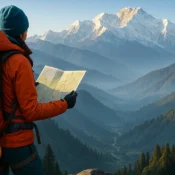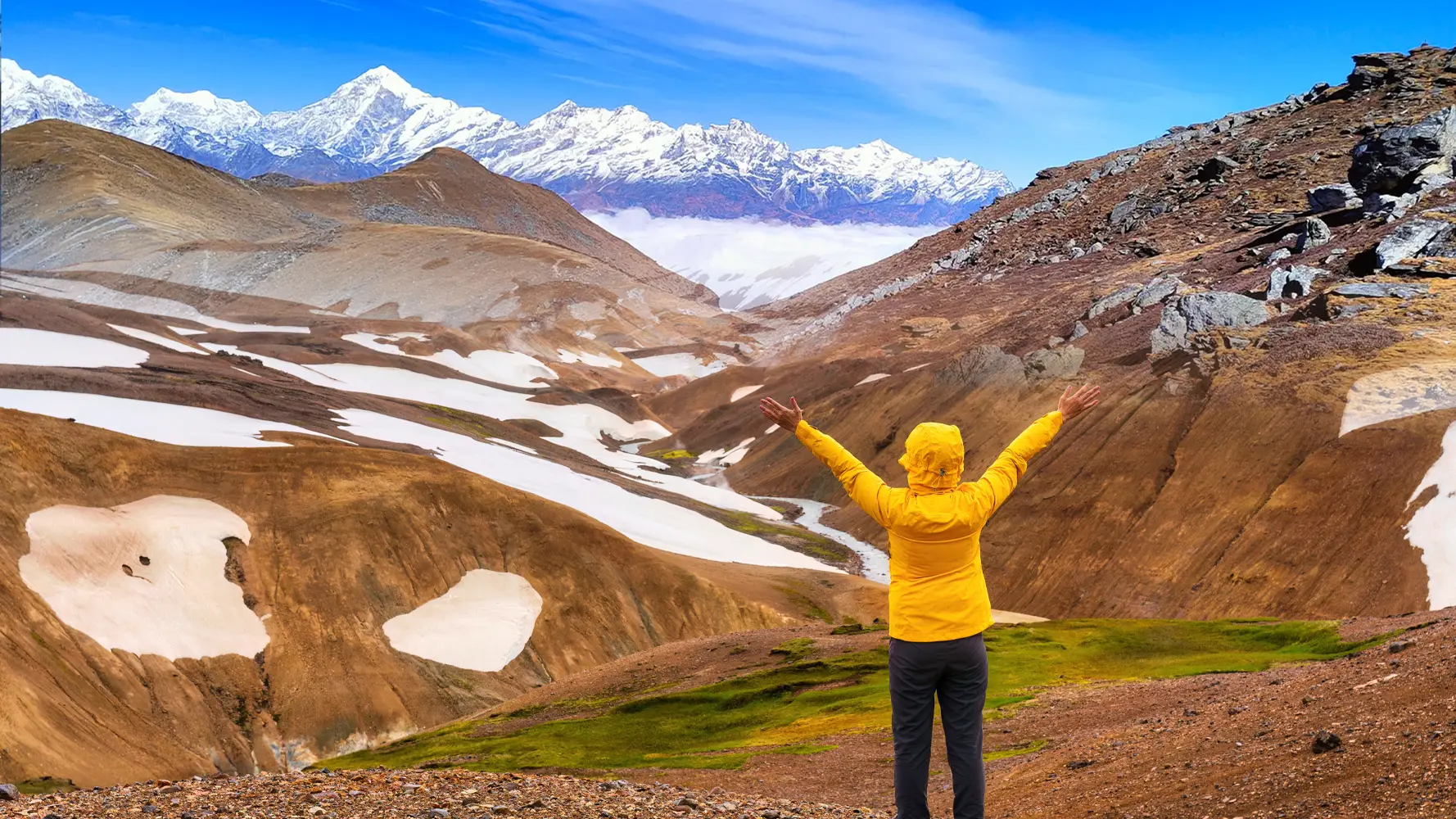
Altitude Sickness: how to prevent while trekking in Sikkim high points
Trekking amid the stunning high-altitude landscapes of Sikkim — such as the Goechala Trek, Dzongri Trek, Singalila Uttarey Circuit Trek, and Sikkim Green Lake Trek — is an adventure of a lifetime.
However, these treks reach altitudes higher than 3,000 meters, where there’s a considerable chance of developing altitude-related illness, commonly referred to as Acute Mountain Sickness (AMS). Preparation, awareness, and prudent action are key for a safe and enjoyable journey.
This comprehensive guide provides everything you need to know about high-altitude sickness: its causes, symptoms, prevention, and treatment — along with practical do’s and don’ts for a trouble-free trek in Sikkim.
What Is High-Altitude Sickness?
Definition
Acute Mountain Sickness (AMS), often called high-altitude sickness, happens when the body has difficulty adjusting to the lower oxygen levels found at heights usually above 2,500 to 3,000 meters. The higher you go, the less oxygen is available, making it harder for your body to function normally.
Who Is at Risk?
- Anyone ascending rapidly to high altitudes, regardless of physical fitness or experience.
- Trekkers on routes in Sikkim that reach heights over 3,000m are particularly vulnerable, including Goechala (up to 4,940m), Dzongri (up to 4,030m), Singalila (up to 3,640m), and Green Lake routes.
Causes of High-Altitude Sickness
- Reduced Oxygen Levels: At high altitudes, atmospheric pressure drops, resulting in lower oxygen availability for your body.
- Rapid Ascent: Climbing too quickly is the leading cause, as your body does not get enough time to acclimatize.
- Physical Overexertion: Strenuous activity can worsen symptoms due to increased oxygen demand.
- Pre-existing Health Issues: Those with heart, lung, or blood problems may be at greater risk.
Recognizing the Symptoms
Common Symptoms
| Symptom | Description |
|---|---|
| Headache | Usually the first sign of AMS |
| Nausea or Vomiting | Feeling sick or vomiting |
| Fatigue | Extreme tiredness, weakness |
| Dizziness | Lightheadedness, difficulty balancing |
| Shortness of Breath | Even when resting |
| Insomnia | Trouble sleeping |
| Loss of Appetite | Reduced desire to eat |
Severe Symptoms: Red Flags
These indicate advanced, possibly life-threatening forms like HACE (High Altitude Cerebral Edema) and HAPE (High Altitude Pulmonary Edema):
- Severe headache, confusion, or coordination loss
- Persistent cough, difficulty breathing even at rest
- Bluish lips or face
- Swelling of hands, feet, or face
- Hallucinations
Immediate descent and medical attention are required if these symptoms are observed.
Prevention: How to Stay Safe
1. Ascend Gradually
- Limit altitude gain: Climb no more than 500m (1,640ft) per day above 3,000m.
- Take rest days: Schedule acclimatization days every 1,000m ascent or after strenuous days.
- Sleep low, climb high: Camp at lower altitudes after trekking higher, if possible.
2. Hydration and Nutrition
- Drink plenty of fluids; dehydration can mimic or worsen AMS.
- Eat high-carbohydrate, protein-rich meals for sustained energy.
3. Physical Preparation
- Build cardiovascular fitness and stamina at least two months prior to your trek.
- Train with uphill walking, weight carrying, and endurance exercises.
4. Medication
- Acetazolamide (Diamox): Can significantly reduce the risk of AMS and speed acclimatization; consult a doctor before use.
- Ibuprofen: Helps manage mild symptoms and headaches.
- Dexamethasone: Reserved for more severe or rapidly progressing cases.
5. Other Strategies
- Avoid alcohol, smoking, and sedatives (especially sleeping pills); these can worsen symptoms or delay acclimatization.
- Get adequate sleep and avoid overexertion in the first few days at altitude.
- Dress warmly to avoid getting chilled, as this can complicate acclimatization.
What To Do If You Get Sick
- Stop Ascending Immediately: Never go higher when symptoms appear. Rest at your current altitude or, if symptoms are severe, begin descent.
- Communicate: Alert your trek leader/guide and trekking companions.
- Monitor Symptoms: Check for worsening signs (e.g., confusion, inability to walk, breathlessness at rest).
- Medication: Take prescribed medications when symptoms are mild.
- Descend Promptly: If symptoms do not improve (sometimes even after medications and rest), you must descend. Descending even a few hundred meters often brings rapid relief.
- Oxygen Therapy: If available, supplemental oxygen can stabilize you while descending, but should not replace descent as primary treatment.
What Not To Do
- Do not ignore symptoms: Even mild AMS can escalate quickly if you continue to climb.
- Do not ascend further: Never continue upward with symptoms of AMS, regardless of your trek schedule or ambition.
- Do not use alcohol or sedative drugs: These impair acclimatization and make diagnosis/treatment more difficult.
- Do not rush: Fast ascents dramatically increase risk.
- Do not overexert: Pushing beyond your limits can worsen symptoms and safety.
High-Altitude Sickness Tips for Major Sikkim Treks
Goechala Trek
- Rapid altitude gain from Tshoka to Dzongri — acclimatization is critical.
- Commonly, symptoms appear from Phedang to Dzongri. Schedule acclimatization days.
- Garlic soup and popcorn (traditional remedies) are offered to aid acclimatization, but rely primarily on medical advice.
Dzongri Trek
- Take extra care ascending from Phedang to Dzongri — plan for acclimatization camps.
- Mild symptoms are frequent: rest, hydrate, and report any issues to guides.
Singalila Uttarey Circuit Trek
- Long, strenuous days with significant altitude changes; avoid overexertion.
- Ensure physical preparedness, as the terrain is tough in parts.
- Not recommended for young children or those with underlying conditions.
Sikkim Green Lake Trek
- Risk peaks between Jakthang, Yabuk, Rest Camp, and Green Lake.
- Take extra rest and acclimatization days at critical campsites.
- Dress warmly at camps and drink boiled water to avoid compounding ailments.
Practical Do’s and Don’ts for Sikkim High-Altitude Treks
Do
- Ascend gradually and plan acclimatization days.
- Eat well and stay hydrated (boiled or treated water).
- Rest if you feel unwell.
- Communicate any symptoms immediately.
- Carry a well-stocked medical kit (Diamox, ibuprofen, oxygen, etc.).
- Listen to your trek leader and follow professional advice.
Don’t
- Rush your ascent or skip planned rest days.
- Ignore headache, nausea, or breathlessness — they may indicate AMS.
- Drink alcohol or use tobacco products during the trek.
- Attempt to treat severe symptoms on your own — always descend.
Why Trek with Himalayan Exposure Tours and Treks?
At Himalayan Exposure Tours and Treks, local travel agent Sikkim, our priority is your safety, acclimatization, and memorable adventure. As locals with decades of Himalayan expertise, we ensure:
- Certified Experienced Guides: Our team is trained in high-altitude first aid and mountain rescue. We know the terrain, weather, and culture — so you’re in expert hands at every step.
- Thorough Acclimatization Plans: We meticulously design our itineraries with rest and acclimatization days tailored for each trek, minimizing AMS risks.
- Essential Medical Kits: Every trek includes comprehensive medical supplies, including oxygen cylinders, AMS medicines (like acetazolamide and dexamethasone), pulse oximeters, and portable stretchers.
- Rescue and Emergency Operations: Our strong local network and preparedness mean swift action in emergencies — including rapid evacuation on foot or with local support teams.
- Personal Attention: Small group sizes ensure individualized care, prompt detection of health issues, and customized pacing.
- Nutritious Meals: Our kitchen staff prepares high-carb, safe, local cuisine, supporting energy and acclimatization.
Let us take you safely through Sikkim’s breathtaking Himalayas, so you can focus on the beauty and adventure of your trek — not the risks. Choose Himalayan Exposure Tours and Treks for responsible, expert-guided, and secure high-altitude trekking in Sikkim.
High-altitude trekking in Sikkim is a rewarding, transformative experience. With solid knowledge, proper planning, and expert local support, you can enjoy the Himalayas safely and bring home memories that last a lifetime. Happy trekking!

